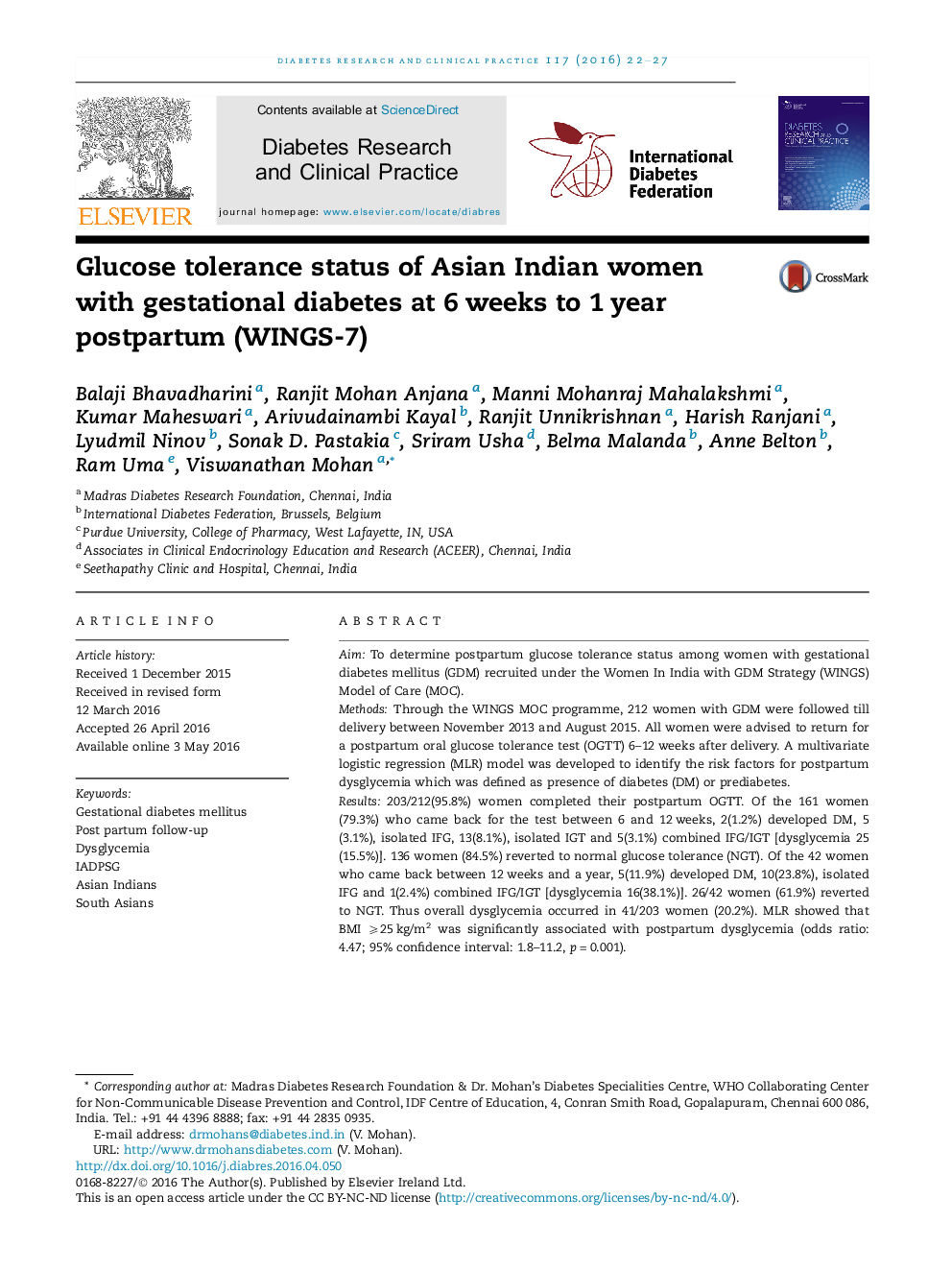| Article ID | Journal | Published Year | Pages | File Type |
|---|---|---|---|---|
| 5898735 | Diabetes Research and Clinical Practice | 2016 | 6 Pages |
â¢203/212 (95.8%) women with GDM recruited under WINGS Model of Care completed their postpartum OGTT.â¢15.5% of women were detected to have dysglycemia by 12 weeks.â¢38.1% were detected to have dysglycemia between 12 weeks and 1 year of delivery.â¢Overall 41/203 women (20%) developed dysglycemia within one year postpartum.â¢This calls for improving postpartum follow-up testing of GDM women.
AimTo determine postpartum glucose tolerance status among women with gestational diabetes mellitus (GDM) recruited under the Women In India with GDM Strategy (WINGS) Model of Care (MOC).MethodsThrough the WINGS MOC programme, 212 women with GDM were followed till delivery between November 2013 and August 2015. All women were advised to return for a postpartum oral glucose tolerance test (OGTT) 6-12 weeks after delivery. A multivariate logistic regression (MLR) model was developed to identify the risk factors for postpartum dysglycemia which was defined as presence of diabetes (DM) or prediabetes.Results203/212(95.8%) women completed their postpartum OGTT. Of the 161 women (79.3%) who came back for the test between 6 and 12 weeks, 2(1.2%) developed DM, 5(3.1%), isolated IFG, 13(8.1%), isolated IGT and 5(3.1%) combined IFG/IGT [dysglycemia 25(15.5%)]. 136 women (84.5%) reverted to normal glucose tolerance (NGT). Of the 42 women who came back between 12 weeks and a year, 5(11.9%) developed DM, 10(23.8%), isolated IFG and 1(2.4%) combined IFG/IGT [dysglycemia 16(38.1%)]. 26/42 women (61.9%) reverted to NGT. Thus overall dysglycemia occurred in 41/203 women (20.2%). MLR showed that BMI ⩾25 kg/m2 was significantly associated with postpartum dysglycemia (odds ratio: 4.47; 95% confidence interval: 1.8-11.2, p = 0.001).ConclusionAmong Asian Indian women with GDM, over 20% develop dysglycemia within one year postpartum, and BMI ⩾25 kg/m2 increased this risk four-fold. Early postpartum screening can identify high risk women and help plan strategies for prevention of type 2 diabetes in the future.
